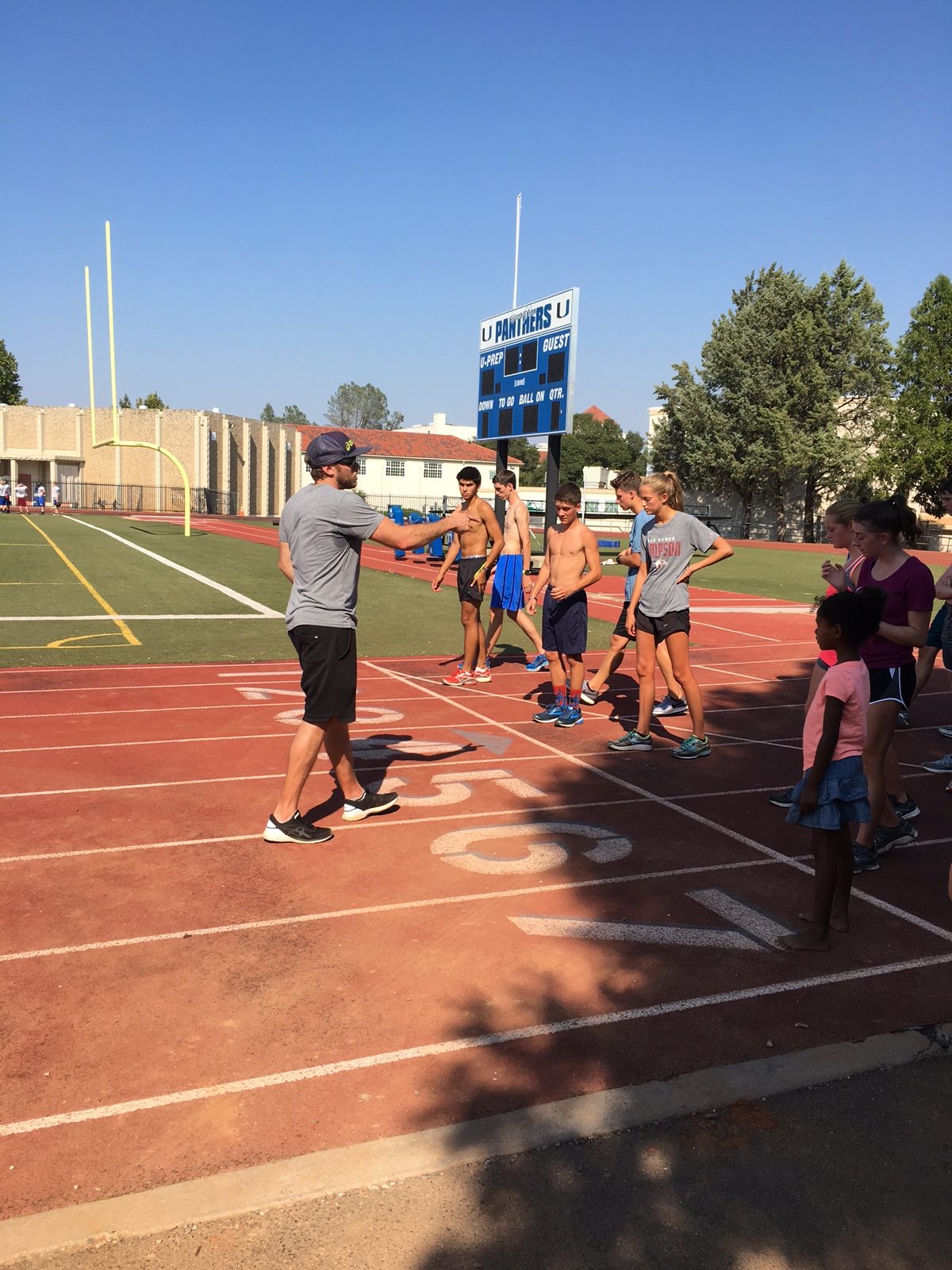This was me…

Ryan and I had the chance to go dog-sledding in Norway, something I greatly anticipated because I knew, as a husky owner and an athlete, I’d appreciate it even more. When we were getting ready to start sledding, the dogs hooked to the sled started barking with excitement and anticipation. But it was the dogs who were about to be left behind, chained to their little wooden box homes, that were actually barking the loudest. I imagine they were protesting not getting to do what they were created to do-run. “I feel you”, I thought to myself. Having just been through an injury, the pain of not getting to do what I love and instead being chained indoors to some machine, was fresh.
My inflamed peroneal tendon started inconspicuously as just a nagging pain, something that felt a bit sharp after performing a routine calf exercise in the weight room and in the days following just seemed a little tighter than usual. I’m usually good at nipping things in the bud but didn’t think much of this, nor did my therapist, until the race was nearly here. It was getting increasingly painful the last few days before the race, but I figured when I got out there and warmed up and had the race endorphins, it would be fine just as it had always been in training.
It was anything but fine. The pain intensified early on in the race, and I knew I was favoring it. But I was still on pace for a big PR, so I resolved in my mind that I could handle whatever pain I faced. But soon after the halfway point, my limp turned to a hobble and my ankle started giving out, causing me to slow. It was a strange feeling to step off the course, but once I did, I immediately couldn’t put any weight on it-or for the 2 weeks following (it’s amazing the amount of pain we can run through when we set our mind to it).
About 2.5 weeks in, I was able to start some light cross training- both a blessing and a curse. It felt good to get the heart pumping a little again, but most cross training activities are not things I enjoy, and it’s mentally draining to have to motivate yourself every day.
For those of you also in cross-training purgatory, I compiled a few tips that helped me survive it and come out sane and stronger:
- Fill your sports bra with your kids Halloween candy. Eat at 5 minute intervals or as desired.
- Music is everything. This is not the time for hipster indie tunes. Fast tempo and as loud as possible is king. I often default to Ryan’s “Together Forward” playlist on Spotify. Blast your favorite dance/house music, and if biking, bust your best arm-only hip hop moves. I do not recommend this on the elliptical (from personal experience). Current favorite to dance to- DJ Snake & Lil Jon “Turn down for what”
- Download a lighthearted upbeat chick flick you haven’t seen (*note “download” and not “stream” because when you’re in cross training purgatory, the slightest thing like frequent buffering can push you over the edge.)
- Adopt 4 kids and field their constant requests for “how do you spell…” while exercising at home.
- If cross training in solitude, you have the benefit that you can sing out loud/yell/grunt/cry/dance. But it sometimes helps to have company, like spin class, others sweating it out around you, people you can pretend to compete with to get those juices flowing.
- Book travel. It may be trips you actually take or fantasy vacations, but most flights you can cancel within 24 hours. So hunt away…
- Cover the clock. You wouldn’t do a long run staring at your watch the whole time, would you? Watching each second tick by is miserable. Cover it with a towel and tell yourself, “Just make it to the end of the next song…”
- Cross train only if it isn’t going to prolong your injury. Work with a therapist to identify what activities to avoid and pay attention to your pain during and after. I try to get as running-specific as possible. With this injury, I could only tolerate the recumbent bike at first. Then the upright bike, then the elliptical. The more upright you can be, working the same muscles as you do running, the easier your return to running will be.
- Give yourself an off day. I never struggle with motivation running, but I never DON’T struggle with it cross training. It’s emotionally taxing, and every so often you need to cut yourself some slack and go to brunch with friends instead.
Expect your first runs back to be awkward. You may even feel like you forgot how to run. It will come back quicker than you think, though. There will be a day you cry happy tears mid-run because you feel like your old self, and it will be sooner than you think.
Lastly, remind yourself that it will make you stronger. Every time I come back to running, it feels so much easier. It still hurts when I run hard workouts, but it’s a movement I enjoy, so there’s an ease with it. You strengthen muscles that have been neglected in running-only training and have a refreshed and hungry perspective. And like the sled dogs, you are ready to get out and grind with wild-eyed excitement, fully present in doing what you were created to do.






